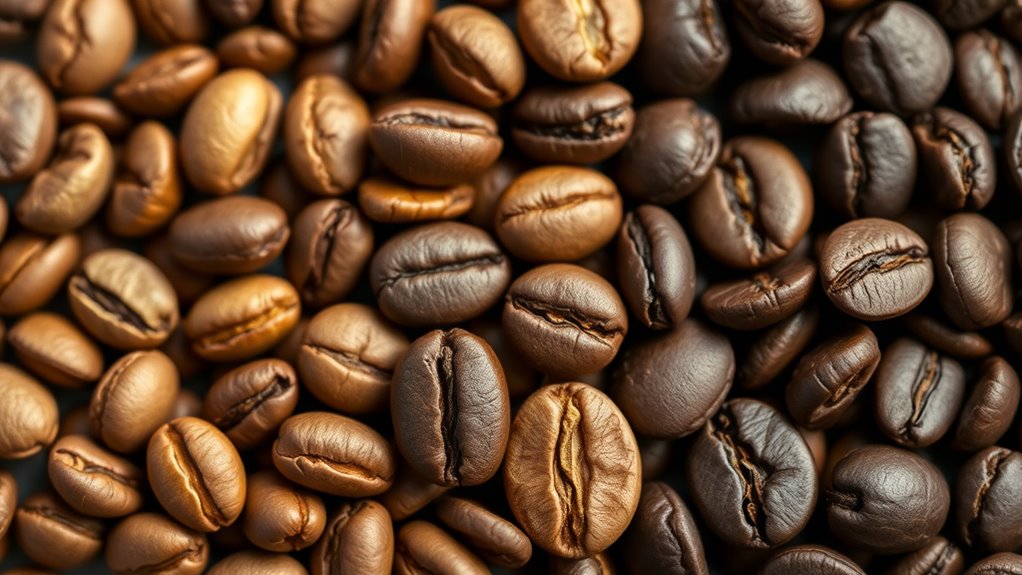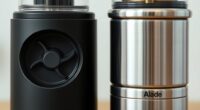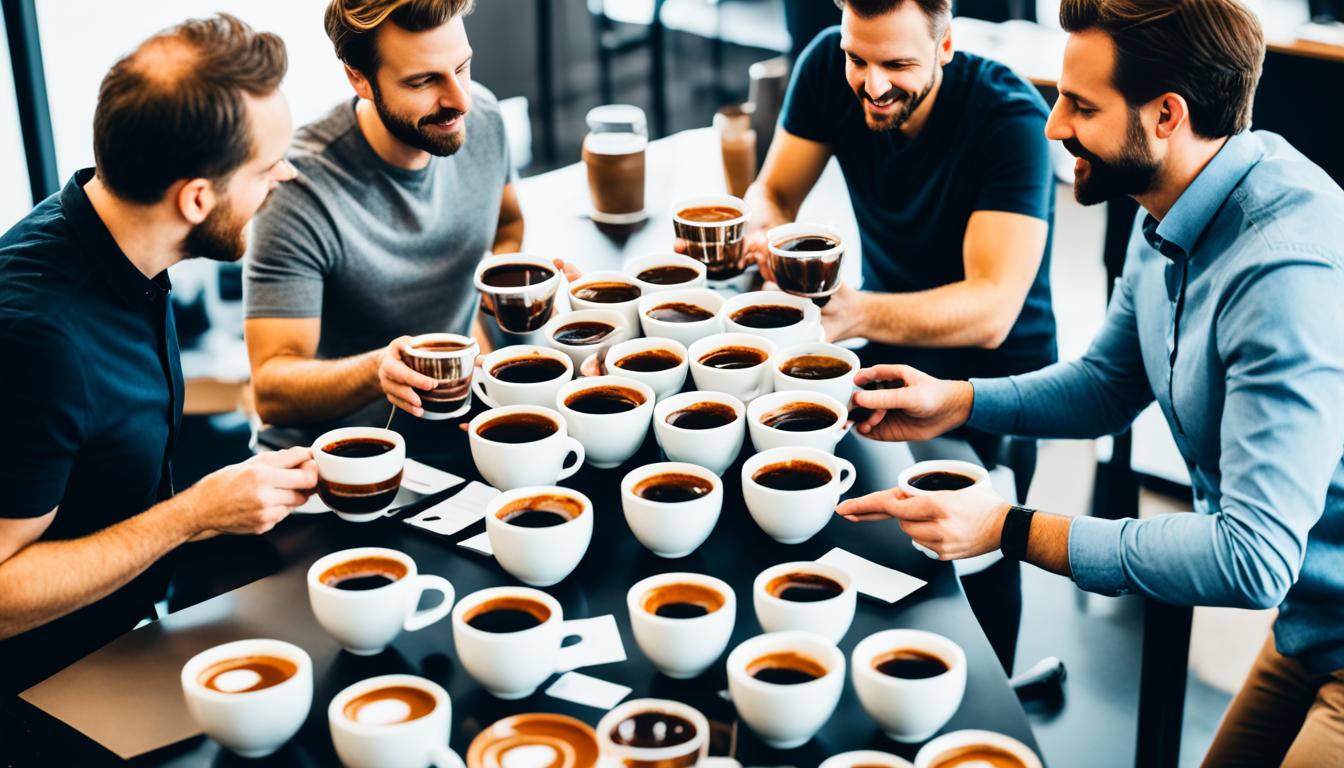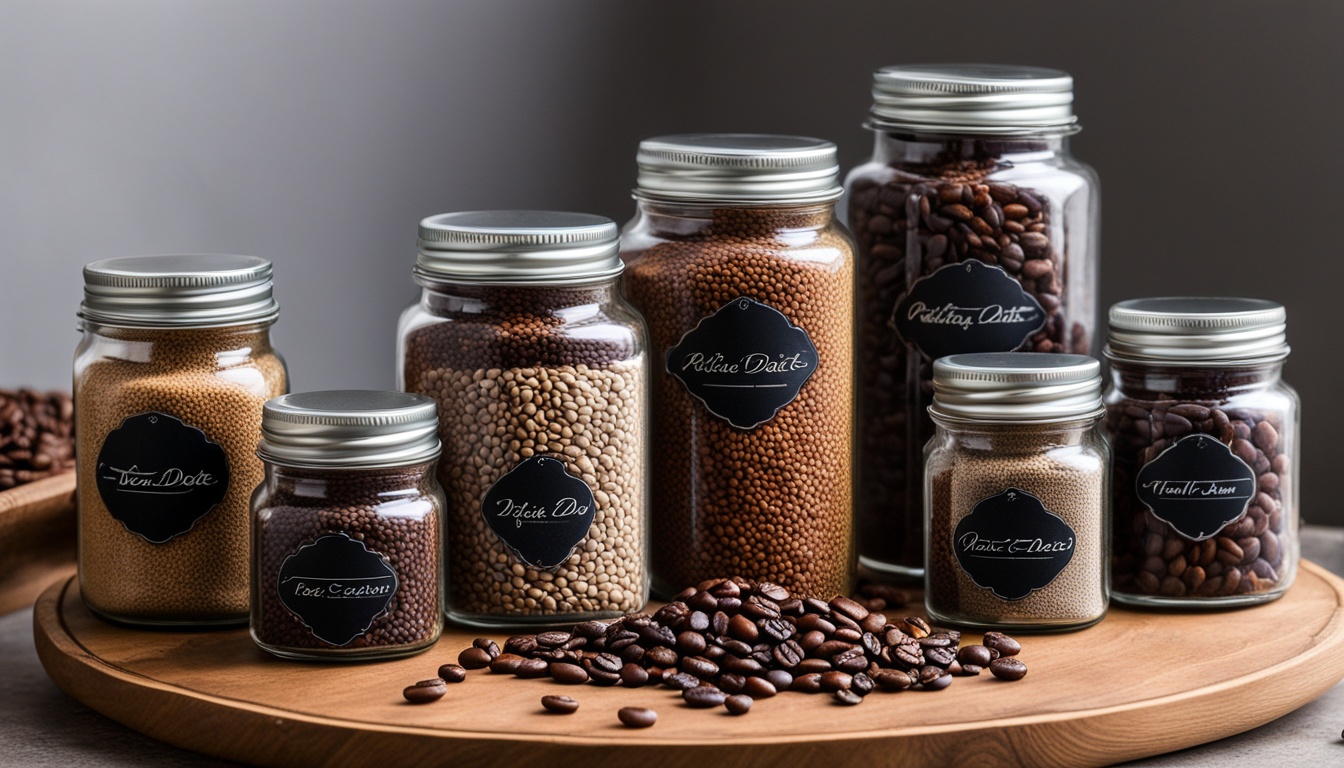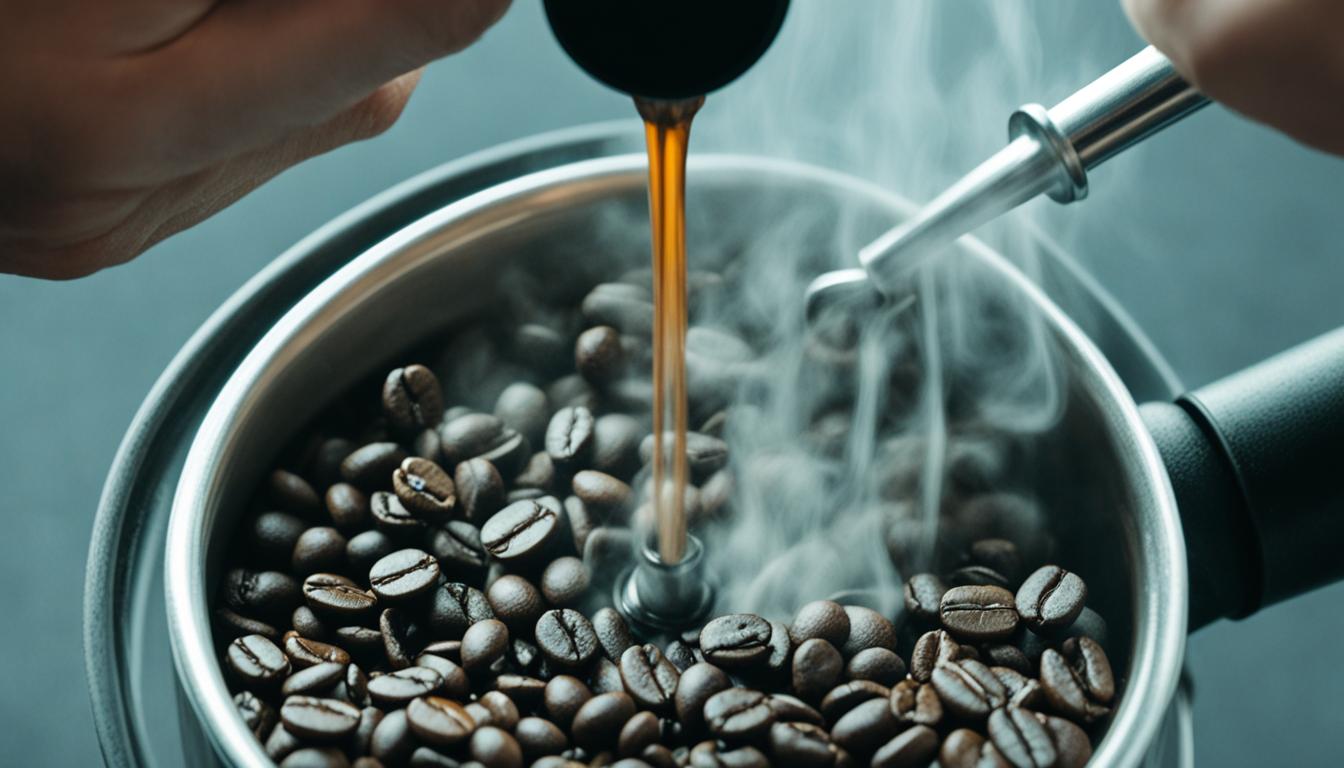Understanding coffee roasts from light to dark means recognizing visual cues like color, surface oil, and aroma changes. Light roasts are light brown, dry, and retain much of the bean’s original flavor with bright, fruity notes. As you move to dark roasts, beans become darker, shinier, and oily, developing bolder, smoky flavors. Knowing these differences helps you choose your perfect brew, and there’s much more to discover about each stage along the way.
Key Takeaways
- Light roasts are heated to 385-410°F, preserving original bean flavors with bright, fruity, and floral notes, and have a matte, oil-free surface.
- The first crack signals the start of flavor development; light roasts are stopped shortly after this stage to retain delicate qualities.
- Darker roasts surpass 430°F, reaching the second crack, developing bold, smoky, and caramel flavors, with beans becoming shiny and oily.
- Visual cues differentiate roast levels: light roasts are light brown and dry, while dark roasts are dark, oily, and almost black.
- Longer roasting increases surface oil and flavor intensity, affecting aroma, mouthfeel, and overall flavor profile from light to dark.
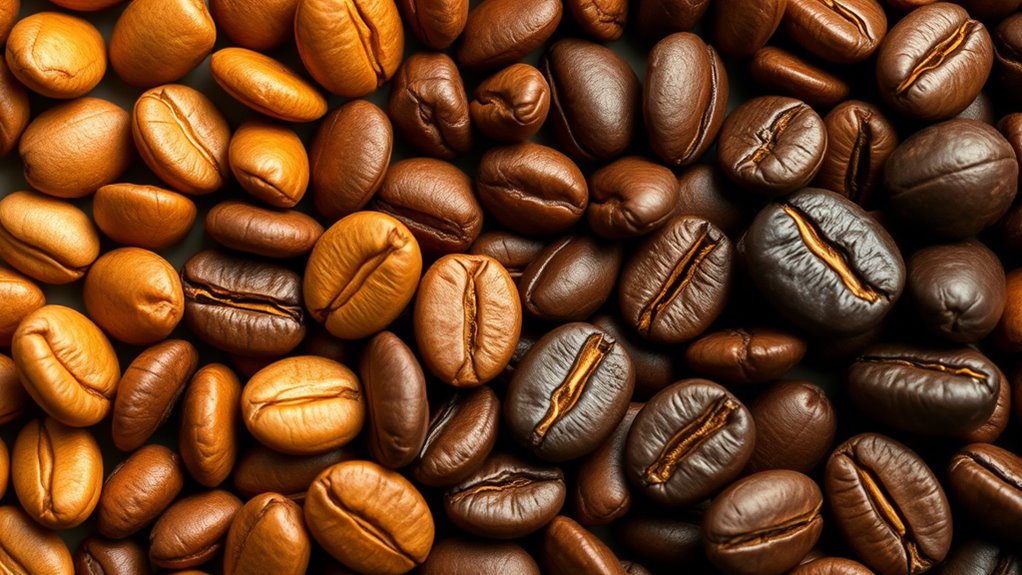
Have you ever wondered how the roast level affects the flavor and appearance of your coffee? The roasting process transforms green coffee beans into the rich, aromatic beans you brew every day. It’s a carefully controlled journey through various roast levels, each producing distinct flavors and visual cues.
Light roasts are heated to around 385-410°F, stopping before the first crack. At this stage, the beans retain much of their original flavor, highlighting bright, fruity, and floral notes. Their surface remains matte, with no visible oil, giving them a light color that reflects their minimal roasting.
Light roasts are roasted to 385-410°F, preserving bright, fruity, floral flavors with a matte, oil-free surface.
As you progress through the roasting process, the beans reach the first crack—a pivotal moment where they emit a cracking sound, signaling a *shift* in flavor development. For light roasts, the process stops shortly after this point, preserving delicate nuances.
Moving into darker roast territory, the temperature surpasses 430°F, pushing the beans into the second crack. This marks a more intense roasting phase, where the beans develop bolder, more robust flavors like smoky, bitter, or caramel undertones. The surface of dark roast coffee beans becomes shiny and oily due to the surface oil rising from inside the beans, a clear indicator that they’ve reached a higher roast level.
The physical appearance of the beans offers visual clues about their roast level. Light roasts are typically tan or light brown, with a dry surface and no oil on the surface. In contrast, dark roasts are darker, almost black in color, with a shiny, oily exterior.
These visual cues align with the roasting temperature and duration, which directly influence flavor profile and texture. The longer the beans are roasted, the more moisture and acids evaporate, and the more surface oil appears. This oiliness not only affects the appearance but also the mouthfeel and flavor intensity, often resulting in a richer, more intense taste.
Understanding these roasting stages helps you appreciate the subtle differences in your coffee. Whether you prefer the bright, nuanced flavors of a light roast or the bold, smoky qualities of a dark roast, recognizing the signs during the roasting process makes it easier to select your ideal brew.
Moreover, the coffee roasting process involves precise control of temperature and time, which shapes the final flavor profile and appearance. Each roast level offers a unique experience, and knowing the key indicators—like surface oil, crack stages, and color—enhances your appreciation for the art of coffee roasting.
Frequently Asked Questions
How to Know if Coffee Is Light or Dark Roast?
You can tell if your coffee is light or dark roast by looking at the beans. Light roasts are light brown with no surface oil and have a brighter, fruity aroma.
Dark roasts are much darker, almost black, with a shiny, oily surface and a smoky scent. The color and surface oil are your best clues.
Also, taste can reveal: light roasts are more acidic, while dark roasts are bolder.
What Do the Different Roast Levels of Coffee Mean?
When you ask about different roast levels, you’re exploring how coffee’s flavor and appearance change with roasting.
Light roasts are heated to lower temperatures, preserving fruity and floral notes, with no oil on the surface.
Dark roasts reach higher temperatures, resulting in bold, smoky flavors and an oily surface.
Each level offers a unique taste experience, from bright and nuanced to rich and robust, depending on how long and hot the beans are roasted.
Is Light or Dark Roast Coffee Easier on the Stomach?
When choosing between light and dark roast coffee for your stomach, it depends on your sensitivity. Light roasts are less processed, so they typically have more acidity, which might bother your stomach if you’re sensitive.
Dark roasts have lower acidity, making them potentially gentler and easier to digest if you’re prone to acid reflux or stomach upset.
Try both to see which one suits your digestion best.
Why Do People Prefer Light Roast Coffee?
You prefer light roast coffee because it offers a brighter, more nuanced flavor that highlights the bean’s natural fruity and floral notes. Its crisp acidity and complex aroma provide a vibrant, invigorating experience you enjoy.
Plus, since it’s roasted for less time, it retains more caffeine, giving you a subtle energy boost.
The lighter color and delicate profile also suggest higher freshness, appealing to your appreciation for subtle, region-specific flavors.
Conclusion
Now that you understand the differences between light, medium, and dark roasts, you can choose the perfect one to match your taste. Whether you prefer the bright, acidic notes of a light roast or the bold, smoky flavors of a dark roast, knowing these profiles helps you enjoy coffee more fully. Experiment with different roasts to discover what excites your palate. Happy brewing—your ideal cup is just a roast away!
